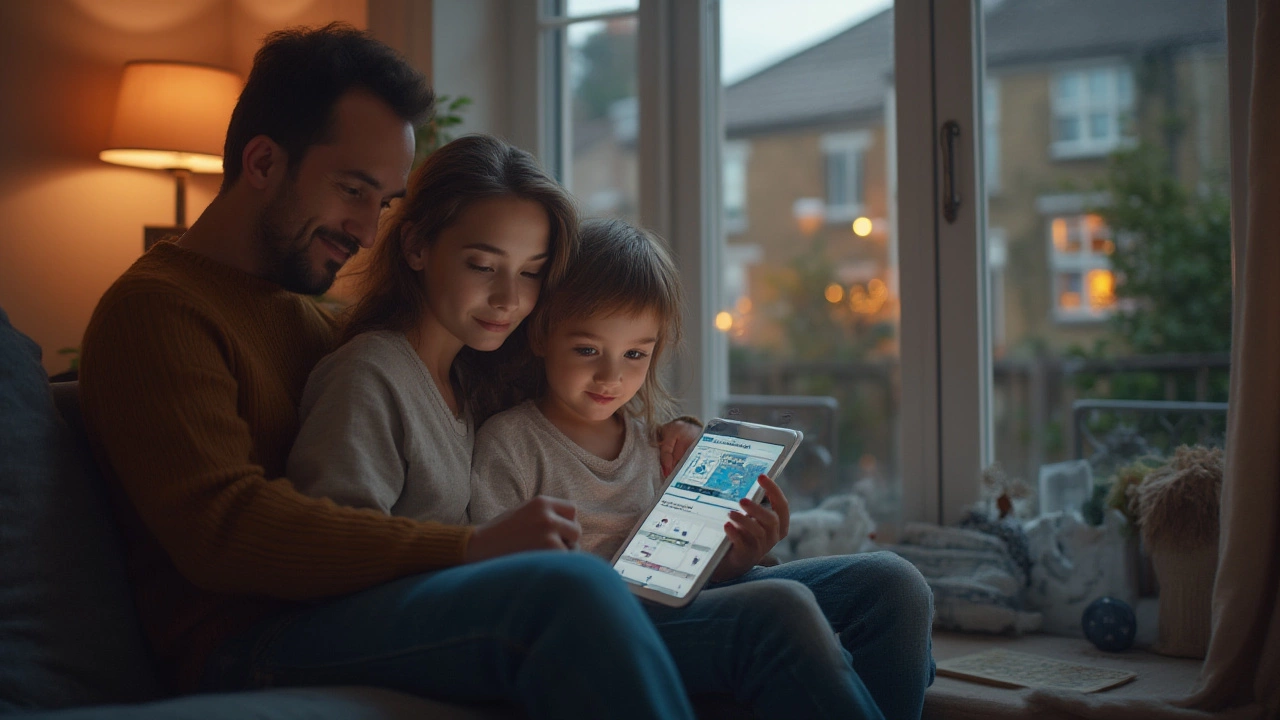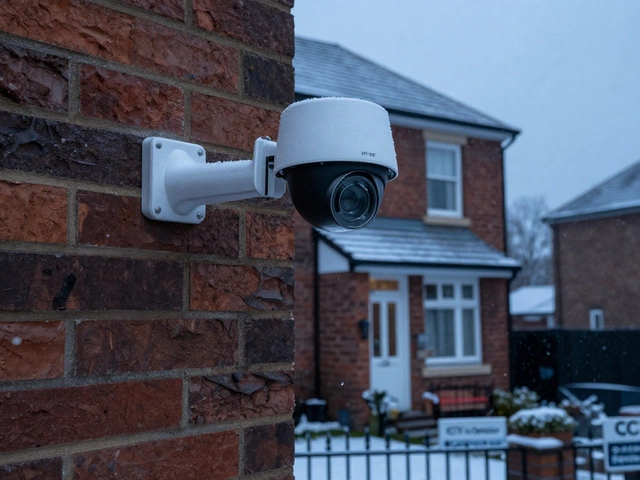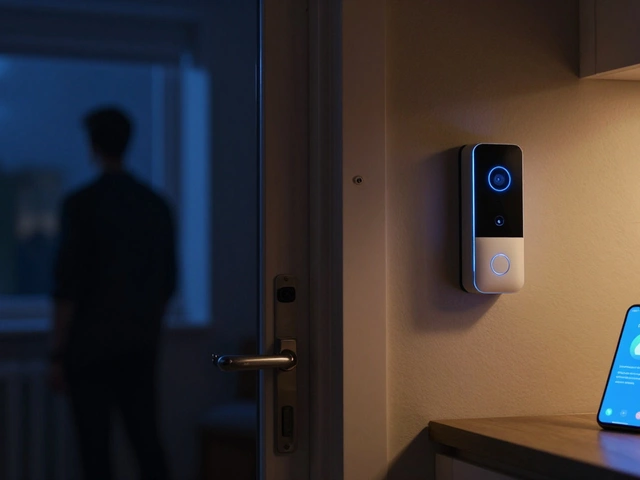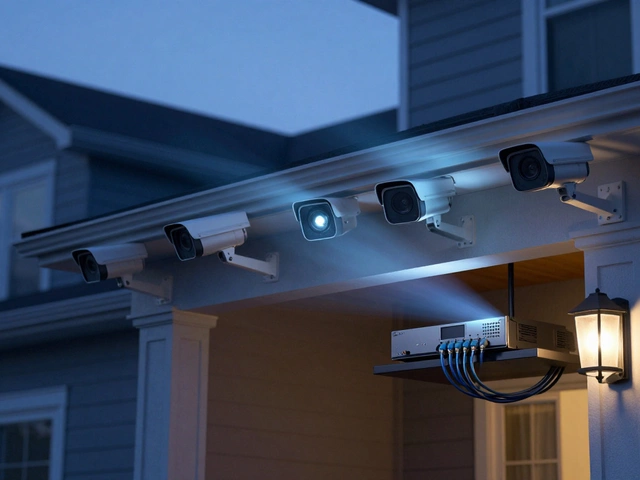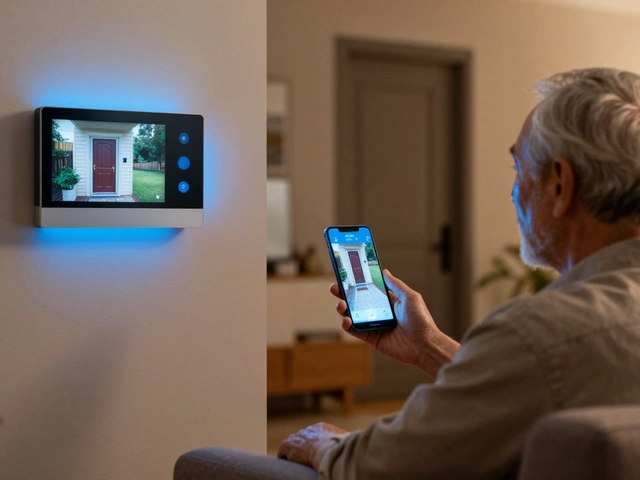Security isn't one of those things you start thinking about after something's gone wrong—unless, of course, you're playing catch-up after a break-in, like my neighbor Mike who used to scoff at smart alarms until his garage became someone else’s shopping spree. Most folks don’t realize the stakes until they hear about unlocked doors or see patrol cars two blocks down. Crime may have dipped in a few big cities this year, but break-ins and porch piracy? Still happening, especially as packages pile up and homes get smarter with every new device. The question everyone ends up Googling: out of all the options out there, which home security system actually stands out as the number one in the US right now? And, even more practically, what makes one brand better than another?
How Do You Actually Choose the Best Home Security System?
Think about this: homes these days aren't as simple as locked doors and window latches. Maybe you’ve got a smart thermostat, a video doorbell, a dog who hasn’t figured out how not to trigger the motion detector, or a teen who’s always sneaking out past curfew. The reality is, choosing a home security system now means balancing tech, monthly fees, reliability, and yes—how well they actually keep out the bad guys. Lots of people are surprised to learn that the top home security companies aren’t always the oldest ones or even the ones with the fanciest commercials. Real world tests and honest customer reviews shake up the rankings every single year.
This year, if you ask any serious industry watcher, home security system leaders actually boil down to three contenders: ADT, Vivint, and SimpliSafe. ADT has over a century in the business. That blue sign alone deters a lot of thieves—there's data saying that. They're also the biggest, covering millions of American homes. Their latest push into smart home integration means they now play nicely with all the top stuff in your house, from Alexa to Z-Wave lights and thermostats. But the contract? It’s a doozy. Most plans still lock you in for three years. Service calls and installation require appointments, and there are horror stories online about bad customer support. Still, if you want pro monitoring and a system that works overtime (especially if you live in a high-crime area), you can’t ignore them.
Vivint’s been shaking things up, especially with their advanced smart home control and slick app. They’ve invested in user-friendly panels, sensors that almost never false-alarm, and outdoor cameras that can scare off package thieves before you even open the app. You pay for that premium, both upfront and monthly. They’re also known for aggressive sales tactics—which can bug some people—but their tech is solid, and the customer service is actually trending upward (big turnaround from years past).
SimpliSafe is the scrappy underdog-turned-mainstream favorite. They won people over with simple wireless installs you can manage yourself in an hour—literally, I set my parents up with one over Thanksgiving while the turkey cooled. The best part? Zero contracts. If you hate being locked in, this is your jam. It’s not just affordable, but also really reliable, and the app is dead easy. On the flip side, some power users find the equipment a little basic compared to Vivint. And you won’t find some extras like deep smart home integrations, but for the regular-person-with-kids-or-pets, it checks almost all boxes.
So which of these is number one? If you look at the surveys, SimpliSafe and ADT are neck and neck. SimpliSafe wins on flexibility and affordability. ADT wins on pro monitoring, police response times, and brand reputation—a big psychological factor for would-be burglars eyeing your lawn. Vivint scoops up users who want more advanced automation—think lights, locks, thermostats, all playing together without fuss.
If you want to nerd out on the data: a 2024 consumer tech study by J.D. Power found SimpliSafe rated highest in customer satisfaction, barely edging out both ADT and Ring. But ADT continues to dominate market share, about 34% of US professionally monitored homes, according to their latest earnings report. Vivint leads when it comes to smart home integration per household, especially in the Southwest and West Coast where solar panels and smart tech adoption are higher. That means the best system depends a lot on you—your budget, your tech comfort, your willingness to deal with contracts or install things yourself.
Couple of tips? Never just go by price tag. Lots of people go cheap, then regret it when glitches pop up. Watch for hidden fees—activation, equipment rental, or monitoring can all add up. And be suspicious of crazy discounts that require a five-year contract. Check real customer reviews, not just on the company website, but on Reddit, BBB, and independent tech review forums. If you’ve got pets, make sure the sensors can be calibrated (or go with brands like SimpliSafe with pet-friendly motion detectors). Want to avoid false alarms that’ll get you on the local police department’s watch-list? Look for dual-authentication sensors or cameras combined with AI smart alerts, not just regular triggers.
Beyond the equipment and apps, think about the human factor: will you actually use the system, or will it turn into that treadmill you never touch again? Having done this with my own family, I can tell you: if the alarm is buggy or the cameras buffer forever, you’ll stop arming the system out of pure frustration. Systems with simple, sticky routines (like arming and disarming via phone, voice, or keypad) get used the most. Systems that make you jump through hoops? Those end up ignored.
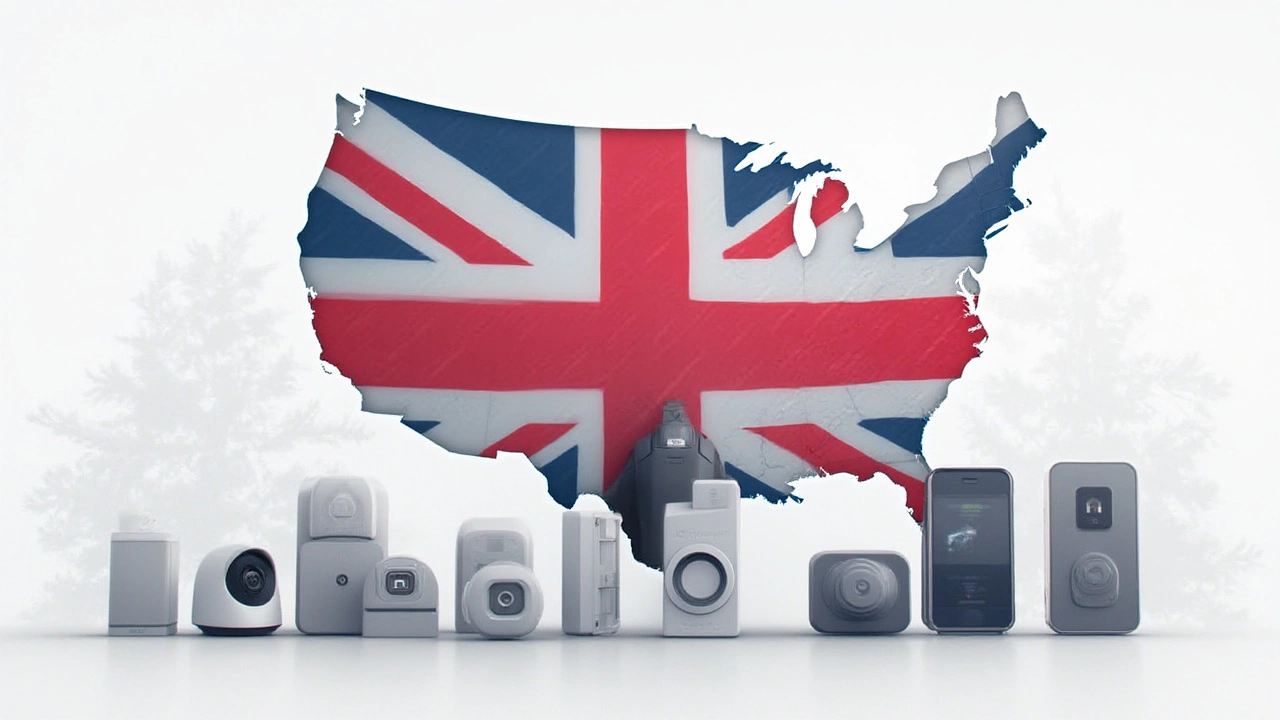
What Features and Technology Matter Most Right Now?
This year, home security isn’t just about alarms and 911—it’s about stopping problems before they start. That’s why top systems go far beyond the old style windows-and-doors approach, rolling out tech that checks every corner of your property in real time. Wireless setups are now the standard. Wired systems are mostly for custom jobs or new builds—nobody wants to tear up baseboards or drill through walls in an older home anymore (my brother tried; lasted half a day before calling in the pros).
The big must-have feature? Pro monitoring—that means real humans watching out for your alerts, 24/7, who’ll actually call the police, fire, or medical responders if you can’t answer. Yes, DIY notifications are great, but if you’re on vacation or your phone’s dead, clients trust professional monitoring above all. Almost every top provider offers it, but not all plans include fire or CO2 monitoring by default—double check the package details.
Another big trend is smart home integration. Most users now want their cameras, smart locks, video doorbells, and thermostats to work together. Best-in-class systems these days offer:
- Mobile app controls (with notifications you can actually customize)
- Smart speaker compatibility (Alexa, Google, or Siri—bonus if you can arm/disarm with your voice)
- Camera analytics (identify people, pets, packages, not just any movement)
- Battery backup and cellular support so you’re not left exposed during an outage
- 24/7 video recording (cloud-based footage with options for up to 60 days of history)
- Environmental sensors for smoke, CO2, freeze, and water leaks
- Panic buttons and medical alert options, which are popular with older family members
Glass break sensors have gotten a big upgrade too—systems now use audio analysis that tells the difference between a dropped glass and an actual window being smashed. Some are so sharp, noise from a neighbor’s house won’t false alarm your entire system.
Let’s not forget privacy. Data breaches made headlines last year. Good systems are encrypted end-to-end, and some (like SimpliSafe) have a no-share policy for your footage unless you explicitly allow it. ADT and Vivint, being bigger, are juicy targets for hackers, but both rolled out two-factor authentication and improved app security this year. Always enable these settings—especially if you’ve got cameras inside.
If you’re thinking “This sounds nice, but won’t I have to spend thousands?”—the good news is, costs have dropped while features went way up. Entry points for monitored security in most mid-sized homes hover around $200 to $600 for equipment, then $15 to $55 per month. Want the lowest price? DIY WiFi kits from SimpliSafe or Ring (Amazon’s play in the space) can be set up for under $300. Pro install from Vivint or ADT? Shell out more, but they’ll wire everything exactly right.
A practical tip for busy families: make sure your system has dedicated guest codes. Kids coming home from school, cleaners, dog-walkers? You want to know who opened or armed the system and when. This stops both accidents and intentional "forgetting" by teenagers (shout out to my daughter Avery, who still thinks she’s a ninja sneaking out for late-night ice cream).
If you travel a lot, check out remote access and automation. Want your porch lights and TV to switch on randomly at night when you’re away? Bet the bad guys stay clear. You can also get notifications for package deliveries or have your video doorbell chat with a stranger on your porch, even if you’re across the country.
For renters or apartment folks, don’t sweat. SimpliSafe and Ring both have solid DIY systems that don’t leave holes in the wall or require landlord approval. You can even move them with you. ADT and Vivint are more popular with homeowners, but they do offer flexible plans for some apartment dwellers—though you’ll want to ask directly about cost and contract length.
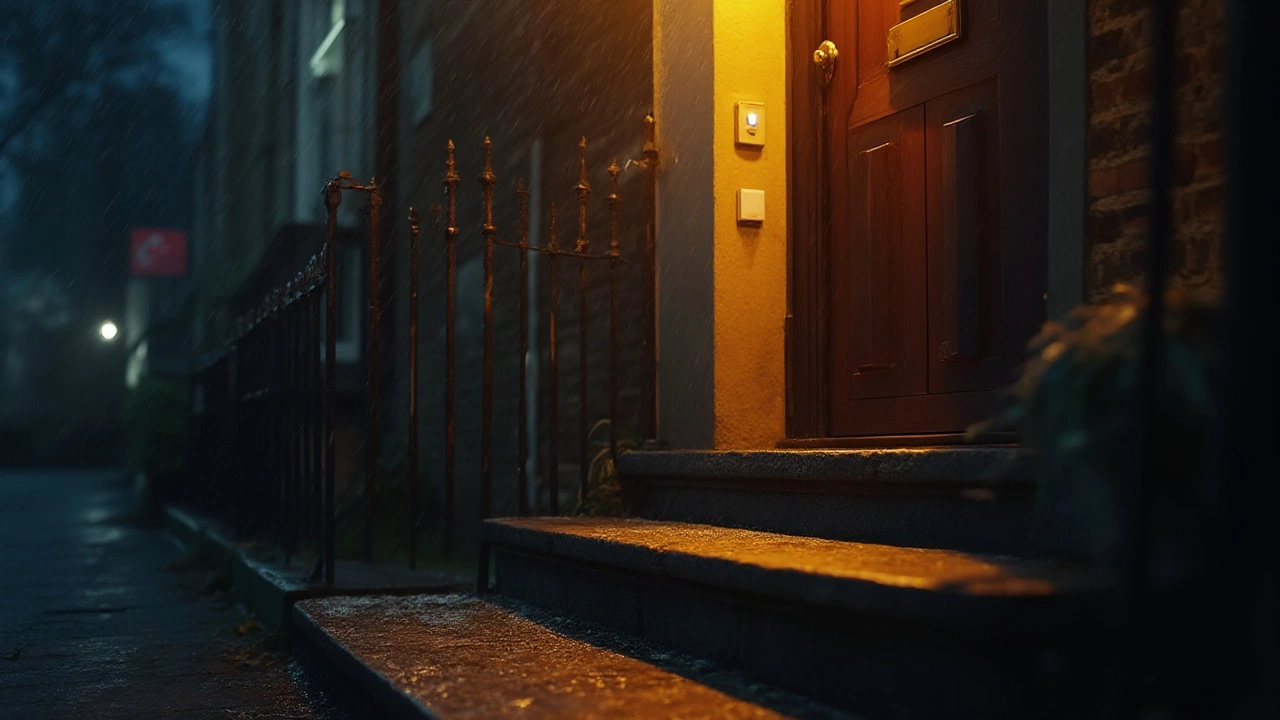
Which Home Security System is America’s Number One Pick Right Now?
Here’s where it gets interesting: the title of "number one" shifts every year based on what people actually care about most—whether that’s price, features, monitoring response times, or something as simple as how annoying (or painless) installation is.
Right now, the system topping most industry lists and real customer polls? SimpliSafe. Their numbers spiked both in new installs and glowing reviews after they updated the app, improved camera quality, and rolled out new environmental sensors. Their "no contract, no nonsense" policy won over folks burned by rival companies. Set-up requires no tools and takes under an hour for most homes—my son Nolan, who still claims he’s “all thumbs,” got it going Solo in his college apartment.
But—SimpliSafe isn’t for everyone. Homeowners who want 2-way voice communication directly with authorities, or want rock-solid pro-grade gear installed in tough locations (like backyard sheds or large garages), still lean toward ADT. Their outdoor camera tech, in particular, is top-tier, and that famous monitoring station stays online even in ice storms and hurricanes. The “ADT effect” is a thing: those classic blue signs and window stickers actually lower break-in rates—documented in a study from the University of North Carolina.
Vivint’s smart home dominance has grow its fan base, especially for big properties and families who want all-in-one control panels and fully automated lighting or locks. Their mobile app is the cleanest of the bunch, and integrations with tools like Nest thermostats and solar systems are seamless. Downside? The upfront sales pitch, and you’ll pay extra for top gear.
For folks who still want rock-bottom price and DIY everything, Ring is worth a gander, but privacy concerns have dogged them since their partnerships with certain police departments. Arlo, too, is an option if you want outside-only surveillance without monthly fees. But they can’t quite match the completeness or reliability of the big three.
Here's how the leaders stack up as of July 2025:
- SimpliSafe: Best for no-fuss families, quick installs, no contracts. High satisfaction. Some limits on advanced integration.
- ADT: Best for pro monitoring, brand deterrence, tough locations. Pricier, but strong for high-risk areas and larger homes.
- Vivint: Best for high-tech homes wanting full automation. High upfront cost, but a connected experience for everything smart in your house.
If you want solid, reliable, and proven, it’s hard to go wrong with SimpliSafe for average-sized homes or renters, and ADT if you want premium monitoring and deep peace of mind. Vivint rules for the smart home/automation crowd who aren't scared by higher price tags.
Quick tip: always call for deals before buying. Every major provider rotates promos: free cameras, waived install fees, or first two months free. You rarely pay sticker price if you negotiate. Ask about no-cost equipment swaps if you end up moving or want to upgrade.
The smarter move is to look past shiny ads and think about your daily life. Does it fit your family’s habits, tech comfort, and budget? If the answer’s yes, you'll actually use your system. And when the time comes—late package, unexpected visitor, or something worse—you’ll be glad you picked the right one.

